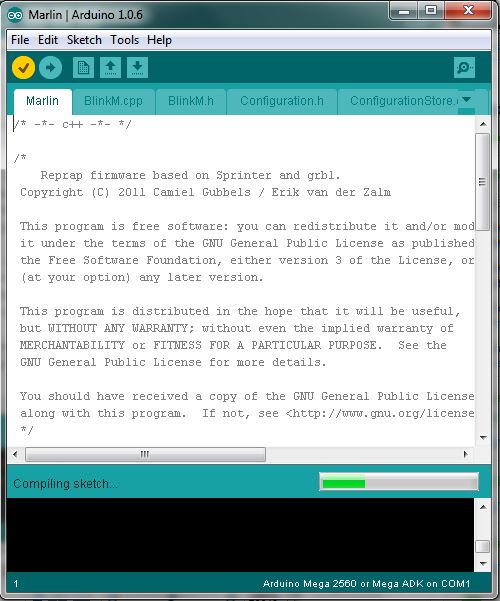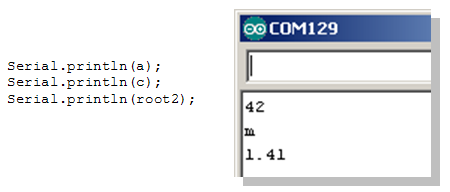

columns) Serial.print( colID ) Serial.println(colID) Serial.print( els.
Arduino println columns serial#
In the Arduino IDE, if you open up the serial monitor window Tools > Serial Monitor, you will see the values streaming down. Serial.println(DELETE) // does line exist // does element exist in line. the number 123 is sent as the three characters ‘1’, ‘2’, ‘3’). Prints numbers as a sequence of digits, each an ASCII character (e.g. IntCelcius = map (LM35Value, 0, 205, 0, 100) // Taking the result of the last line and mapping that to 0.100 //Īnyhow, look a little closer. If we upload this sketch to the Arduino, the value of coolFactor will be sent to the serial port every time through the loop(). SD - println () Print data, followed by a carriage return and newline, to the File, which must have been opened for writing. B) Trying to mat an int from 0.1 is pointless, Its one or the other. IntLM35Value = map (LM35pin, 0, 1, 0, 205) // Mapping the pin number from 0.1 -> 0.205? Makes no sense. You may want to read up on how the Arduino map thing works : Link LM35Value = analogRead(LM35pin) // reading the analog value into LM35Value. Int LM35Value = 0 // Variabele voor sensorwaarde I have searched for tutorials that explain this easily and just cannot find any that have helped.
Arduino println columns code#
I am struggling to figure out how I can write the code to print all numbers from a specified column rather than from a row. Its your go-to function if youre looking for a more efficient way to combine text and variables into a string. You are saying that this works? int LM35pin = A0 // Sensor op poort A0 I have an array of 3 numbers per row, 4 columns deep. Sprintf() stands for string print format(ted). In that case, the choice of technique to wait for the Serial object to start up is up to the programmer.įinally, note that in many applications, the loss of the first few lines of output to the Serial Monitor is inconsequential, especially after the sketch is debugged.So. The standard Arduino library provides a Serial object, which has three commonly used methods. A running sketch executing Serial.print or Serial.println commands send most of the data from the Arduino board to the host.

Some handshaking between the host and board is required to make sure the data is communicated correctly, so there is communication in both directions. Connect the SCL pin to the I2C clock pin and the SDA pin to the I2C data pin on your Arduino. However, when I open the Serial Monitor the results just alternate between the two in one single column. Begin by connecting the VCC pin to the Arduino’s 5V output and the GND pin to ground. I've got an Air Quality sensor and a Light sensor running off the arduino. Uploading a sketch to the board sends data (mostly) from the host to the board. If you’re using an I2C OLED display, please refer to this wiring.
 here is the snip it of code that does the serial printing: Serial.print ( (p1time-previousMillis)/1000, 4) and here is all of my code: include
here is the snip it of code that does the serial printing: Serial.print ( (p1time-previousMillis)/1000, 4) and here is all of my code: include Arduino println columns how to#
When an Arduino board is connected to a host computer via a USB cable, the communication goes in both directions. I was wondering how to display decimals with serial.print.
all and any help is appreciated includeHow can i store these values from the user and then print them with my temp.


 0 kommentar(er)
0 kommentar(er)
